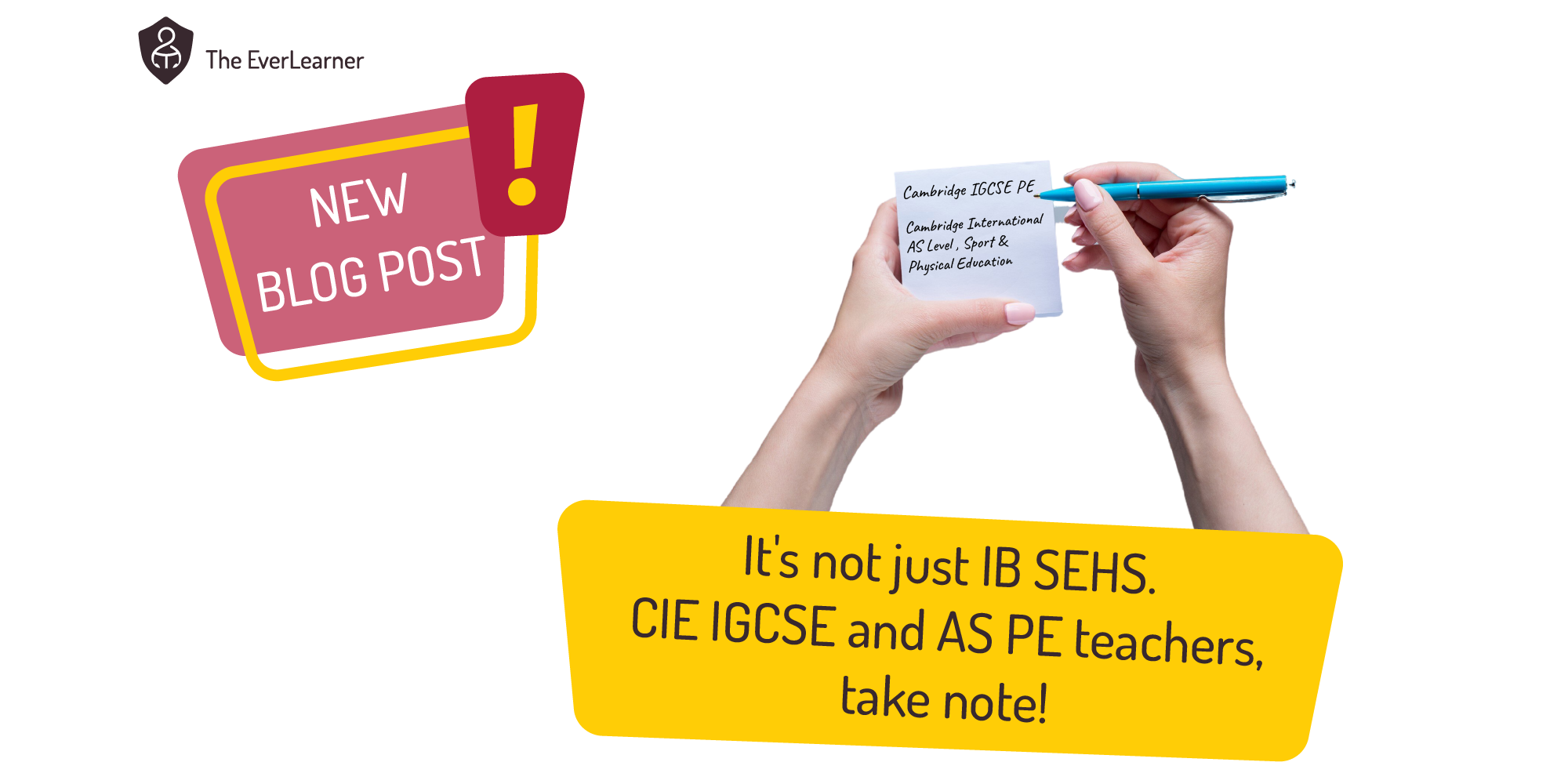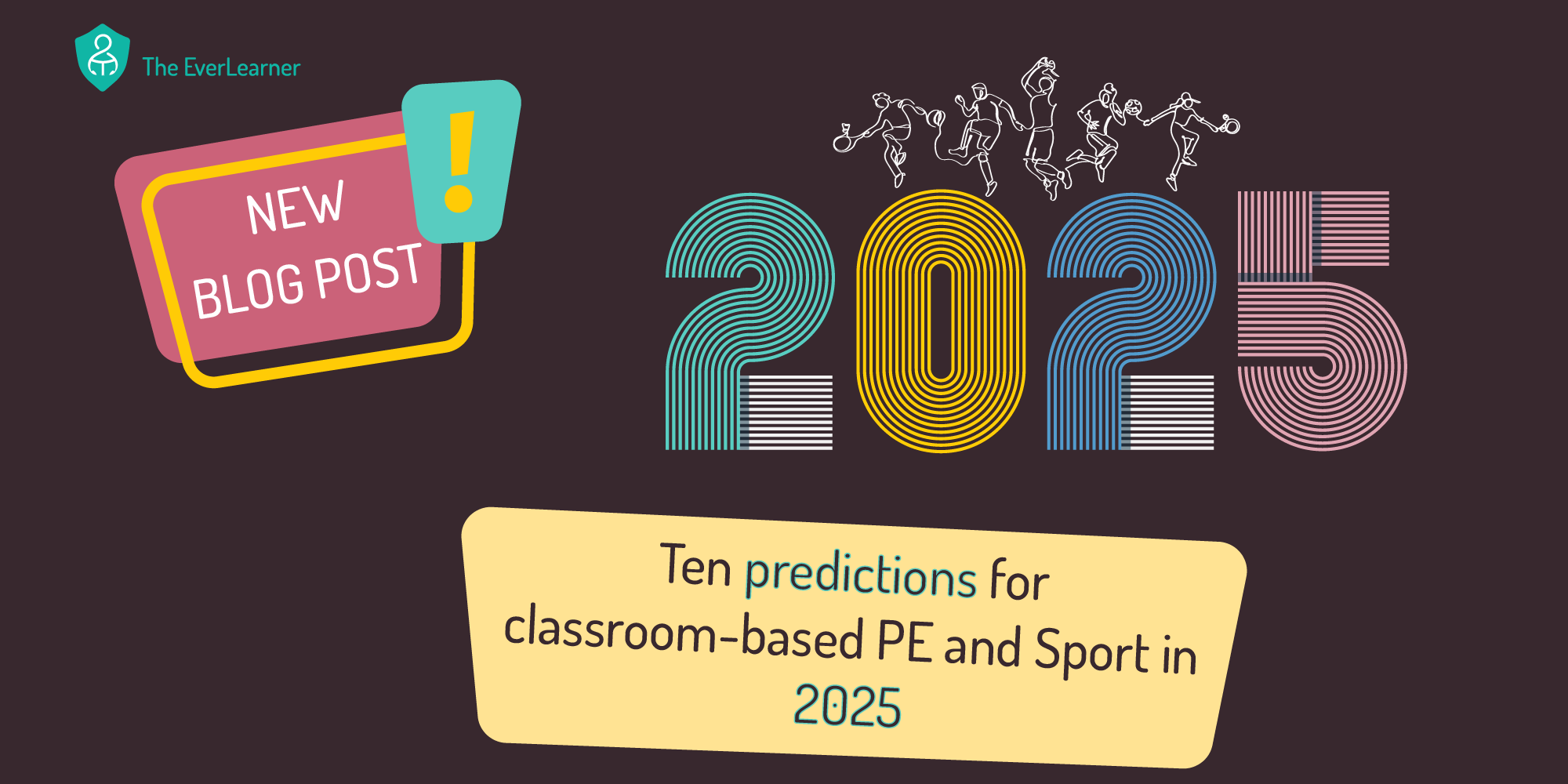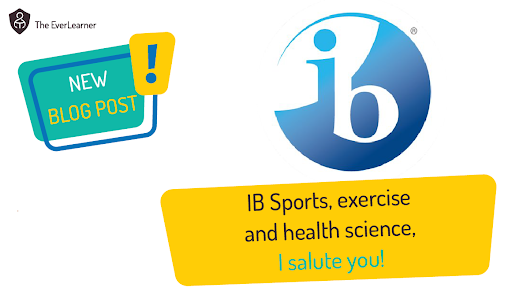10 Top tips for teaching the new IB SEHS course
The new International Baccalaureate Sport, Exercise and Health Science course will be taught by PE teachers around the world starting September 2024. This course, the first-ever PE/sport course to sit alongside biology, chemistry and physics as a core science, will challenge teachers by its structure, dynamics and classroom requirements. In this post, I want to share my top tips for teachers preparing for the delivery of the course and to provide my insights having just completed the writing and recording of my resources for the entire new course.
My 10 top tips are:
- Invest in subject knowledge.
- Ensure that teaching can occur more than just once.
- Develop scientific skills throughout.
- Exemplify concepts as often as possible.
- Introduce exam practice from week one.
- Establish a core assessment model.
- Have learners pre-study lesson content.
- Quiz, quiz, quiz!
- Introduce the scientific investigation early.
- Work with the science department.
1Invest in subject knowledge.
When you read through the course guide for IB SEHS 2024, it might be easy to overlook the importance of pure subject knowledge because the course seems to have numerous moving parts. The course is a core science. It involves clearly defined data skills. It establishes linking questions and themes between topics, for example. But the fact of the matter is that all of these skills and requirements are unlocked by subject knowledge. In order to think and research scientifically or accurately use data, students must know and understand the concepts of the course. Therefore, PE and sport teachers MUST be confident to allocate substantial learning time to subject knowledge.
This may feel daunting at first glance. Many new topics such as the gut microbiome or coefficient of restitution that have not been previously required on the legacy IB SEHS courses are now required. I have personally experienced this challenge in my recent teaching of the new IB SEHS as it is, for instance, the first time I have taught about Paivio’s imagery framework. But perhaps this is where my work can help you a great deal. I have invested the recent months in delivering the best possible teaching I can in these new areas and these are available to all IB SEHS teachers for free until 2025. Here’s an example:
2Ensure that teaching can occur more than just once.
In 2024 and beyond, teaching and instruction need to be available to students more than once. This is not because modern students are different but because the world is and the cost-effectiveness of technology such as video means that most students will have teaching available to them at any point in their development.
Teachers need to structure their new IB SEHS provision ensuring that students can rely on repeatable teaching of key concepts. Put into other words: one-off teaching will not cut it IF it is the only instruction available to students.
In my own case, I have recorded every lesson of the new IB SEHS 2024 course and have made it available to my students via TheEverLearner.com. Here, students can watch or rewatch my teaching, tagging notes to the video timeline whilst their viewing stats and engagements are reported back to you, the teacher. The beauty of this is that you can still teach in person in the classroom but recorded lessons are ever-available making self-paced learning and the process of “unstucking” convenient and achievable.
3Develop scientific skills throughout.
In one sense, the scientific accuracy of the IB SEHS is an incredible opportunity for PE teachers to teach the course “right”. Almost all other PE and sports qualifications lack the scientific rigour of the IB SEHS. In A-level, GCSE and BTEC courses, it is typical for PE teachers to teach “in the PE way”. But the IB SEHS is different. It is a science and this means that the methodologies students experience matter.
I intend to write a further blog post about 10 specific changes PE teachers will need to make to meet this scientific rigour head-on and I will make this available as soon as possible. But, for now, I want to stress that PE teachers must ensure that the scientific mind, process and –even– scepticism need to be built into the learners of the IB SEHS course. In fact, there should be no experiential difference between a student selecting IB SEHS or IB chemistry, say. This is our challenge.
4Exemplify concepts as often as possible.
IB SEHS is an applied experience. This is an excellent feature of the course. 100% of the learning can be applied by learners to themselves or other individuals. Therefore, the learning experience must be applied and experiential.
In simple terms, this course must be taught in the classroom/lab AND in the applied space, whether this is a gym, a sports hall, a swimming pool or a sports pitch. 100% of the learning can be learned, at least partially, by doing. Therefore, PE teachers must build this experience with their students.
5Introduce exam practice from week one.
The majority of assessment of the IB SEHS course comes via exams. Therefore, experiencing both assessment conditions AND exam practice is essential to the success of the IB SEHS student.
Focussing on assessment first, I would argue that students need to experience assessment in four tiers:

6Establish a core assessment model.
All examined courses require a core assessment model. IB SEHS is no different and I urge PE teachers to build their assessment model from the outset. In my own case, I favour the following assessment model:

Quizzing is used in tier 2 (in test mode: time restriction per question, immediate feedback) and tier 3 (in checkpoint mode: time restriction per checkpoint and feedback upon submission) prior to exam work, when students will experience at least 15 raw marks per topic area.
Beyond this, I also advocate for core assessments to be both interleaved and spaced. In other words, students need to experience core assessments at the appropriate moments with older and newer content mixed in. Furthermore, interleaved assessments should achieve that most “undesirable desirability” of desirable difficulty because the teacher is choosing to assess associated and potentially confusable topics and skills together. As many of you will know, this practice, despite its counter-intuitiveness, causes both knowledge and skill retention to be greater over time.
7Have learners pre-study lesson content.
A few years ago, flipped learning was all the rage. The concept was a good one: having students pre-study material, leaving lesson time for more applied skills and experiences. The problem was that “sending the students to YouTube” to watch a video was deeply unreliable and occurred outside of an educational environment. Well, no more! In 2024, exposing students to razor-sharp content in an educational environment prior to a lesson is easy and cost-effective.
When you set pre-study/pre-loading/flipped learning, I strongly recommend at least two core features:
The tutorial or learning experience must be consumed in an education-specific environment and must provide both the learner and the teacher with clear data about this consumption.
The tutorial or learning experience must be ratified with the inclusion of a short, mastery-based quiz on core knowledge and skills.
I have written extensively about how I personally achieve pre-study. Pre-study is a high-impact practice when it is done with clear educational values and I urge teachers of the new IB SEHS course to seriously consider this possibility in order to give students the advantage.
8Quiz, quiz, quiz!
Call it “retrieval practice”, call it “quizzing”, call it “encoding”… I don’t care. Students need to quiz in order to both establish and refine their subject knowledge on the IB SEHS course.
In order to bring this concept to a quick understanding, take a look at these two students:

Character image 1. (Notes associated): Has attended 100% of class sessions, completed 100% of homework. All resources have been analogue and have received feedback where the analogue process allows in a relatively gradual timeframe.
Character image 2. (Notes associated): Has attended 100% of class sessions, completed 100% of homework. All resources have been a combination of analogue and digital, including the completion of approximately 3,500 quiz questions with immediate feedback and frequent usage of educational imagery. Feedback on all quizzing has been immediate and personalised.
Considering that student 2 has all of the experiences of student 1 as well as a significant tranche of quizzing and associated feedback. What does your common sense tell you about these variables?
- Efficient retrieval of key concepts from long-term memory
- Efficient retrieval of terminology from long-term memory
- Efficient recognition of models and principles in visual form
- Efficient discrimination of topics from one another
- Efficient association (linking) of topic concepts
Which character do you believe, on average, is going to achieve these variables better? There is no doubt in my mind that, on average, student 2 is going to outperform student 1 on all five variables.
9Introduce the scientific investigation early.
The scientific investigation (the non-examined assessment of the IB SEHS) is a very exciting opportunity for students and I urge teachers to introduce the concept of the learning as early as possible in the course experience.
The scientific investigation invites students to research and delve into an area of study that they are fascinated by and to do so based on their own, self-generated, scientific research question.
Ignite students with this possibility from lesson one and encourage them to reflect on their possible research question from the outset.
10Work with the science department.
I have written extensively in the past about the importance of PE and science departments working in unison and I further this advocation here. PE teachers delivering the IB SEHS must work in combination with the science department. In fact, it should really be argued that teachers of IB SEHS are now the science department.
As immediately as possible, sit down with the head of science and share this article with them. Discuss the potential for collaboration and, most importantly, follow these conversations with actions.
In my own case, I am fortunate to be a teacher of both PE and biology and, therefore, this journey is simpler for me. However, it also allows me to understand the critical importance of collaboration between subject experts.
In the most general sense, I think both PE teachers, on average, and science teachers, on average, will find the IB SEHS course very challenging. For PE specialists, the scientific rigour and processes will be more precise and refined than they are used to, on average. For science specialists, the fundamental requirement of ongoing application to sport, health and exercise will be equally challenging on average. Therefore, PE and science teachers can support one another to achieve the right level of provision and guidance for learners.
Conclusions
So, there you have it… 10 tips that I highly recommend that colleagues action in the immediate term.
In a blog post I am planning for the near future, I am going to highlight a range of content-specific areas of the new IB SEHS that I found challenging to deliver. I will share my resources on these topics and I will share my teaching of them too. Look out for this in the coming blogs.
Have a lovely day.
James
%20Text%20(Violet).png)



